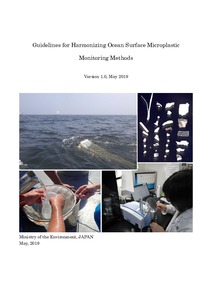| dc.contributor.author | Michida, Yutaka | |
| dc.contributor.author | Chavanich, Suchana | |
| dc.contributor.author | Cózar Cabañas, Andrés | |
| dc.contributor.author | Hagmann, Pascal | |
| dc.contributor.author | Hinata, Hirofumi | |
| dc.contributor.author | Isobe, Atsuhiko | |
| dc.contributor.author | Kershaw, Peter | |
| dc.contributor.author | Kozlovskii, Nikolai | |
| dc.contributor.author | Li, Daoji | |
| dc.contributor.author | Lusher, Amy L. | |
| dc.contributor.author | Martí, Elisa | |
| dc.contributor.author | Mason, Sherri A. | |
| dc.contributor.author | Mu, Jingli | |
| dc.contributor.author | Saito, Hiroaki | |
| dc.contributor.author | Shim, Won Joon | |
| dc.contributor.author | Syakti, Agung Dhamar | |
| dc.contributor.author | Takada, Hideshige | |
| dc.contributor.author | Thompson, Richard | |
| dc.contributor.author | Tokai, Tadashi | |
| dc.contributor.author | Uchida, Keiichi | |
| dc.contributor.author | Vasilenko, Katerina | |
| dc.contributor.author | Wang, Juying | |
| dc.date.accessioned | 2019-07-10T14:19:04Z | |
| dc.date.available | 2019-07-10T14:19:04Z | |
| dc.date.issued | 2019 | |
| dc.identifier.citation | Michida, Y. et al (2019) Guidelines for Harmonizing Ocean Surface Microplastic Monitoring Methods. Version 1.0. Chiyoda-ku, Japan, Ministry of the Environment, 68pp. DOI:http://dx.doi.org/10.25607/OBP-513 | |
| dc.identifier.uri | http://hdl.handle.net/11329/983 | |
| dc.identifier.uri | http://dx.doi.org/10.25607/OBP-513 | |
| dc.description.abstract | Marine litter, including microplastics, is a current global challenge. Determining the existing distributions and quantities of microplastics in the ocean is an urgent task.
Comparison of reported microplastic abundances, however, is difficult at present due to diverse monitoring methods. Hence, harmonization of monitoring methods for marine litter, including microplastics, is recognized as an important task/activity.
To remedy the situation, the Ministry of the Environment, Japan (below, MOEJ) has been promoting efforts to ascertain the actual state of marine pollution by encouraging horizontal distribution mapping of microplastic densities at the ocean surface worldwide. The MOEJ has developed Guidelines to harmonize ocean surface layer microplastic sampling and analytical methods, based on the results of two projects implemented by scientists. The first of these, for examining analytical methods, was an inter-laboratory comparison conducted by 12 institutes in 10 countries in 2017 to cross-check results of their own analytical methods using a pair of standard samples, each containing a predetermined quantity of plastic particles and a predetermined amount of non-plastic material. The second, for evaluating variances due to differences in field sampling methods, was a comparison of results obtained using various methods in FY2018, in Tokyo Bay. Based on analyses of the results obtained in these projects, recommendations for harmonization and points to be noted when examining monitoring results were summarized in the MOEJ’s Guidelines.
These Guidelines were prepared to enable anyone implementing ocean surface-layer microplastics-monitoring to design their monitoring protocols, compare their results with other monitoring results and interpret them based on such comparisons. | en_US |
| dc.language.iso | en | en_US |
| dc.publisher | Ministry of the Environment, Japan (MOEJ) | en_US |
| dc.subject.other | Microplastics | en_US |
| dc.subject.other | Ocean surface | en_US |
| dc.subject.other | Net sampling | en_US |
| dc.subject.other | Harmonization | en_US |
| dc.subject.other | Monitoring methods | en_US |
| dc.title | Guidelines for Harmonizing Ocean Surface Microplastic Monitoring Methods. Version 1.0. {SUPERSEDED by http://dx.doi.org/10.25607/OBP-867] | en_US |
| dc.type | Report | en_US |
| dc.description.status | Published | en_US |
| dc.format.pages | 68pp. | en_US |
| dc.publisher.place | Chiyoda-ku, Tokyo, Japan | en_US |
| dc.description.currentstatus | Superseded | en_US |
| dc.description.sdg | 14.1 | en_US |
| dc.description.bptype | Best Practice | en_US |
| obps.contact.contactemail | KAIYOU02@env.go.jp | |
| obps.resourceurl.publisher | http://www.env.go.jp/en/water/marine_litter/guidelines/guidelines.pdf | en_US |
 Repository of community practices in Ocean Research, Applications and Data/Information Management
Repository of community practices in Ocean Research, Applications and Data/Information Management
